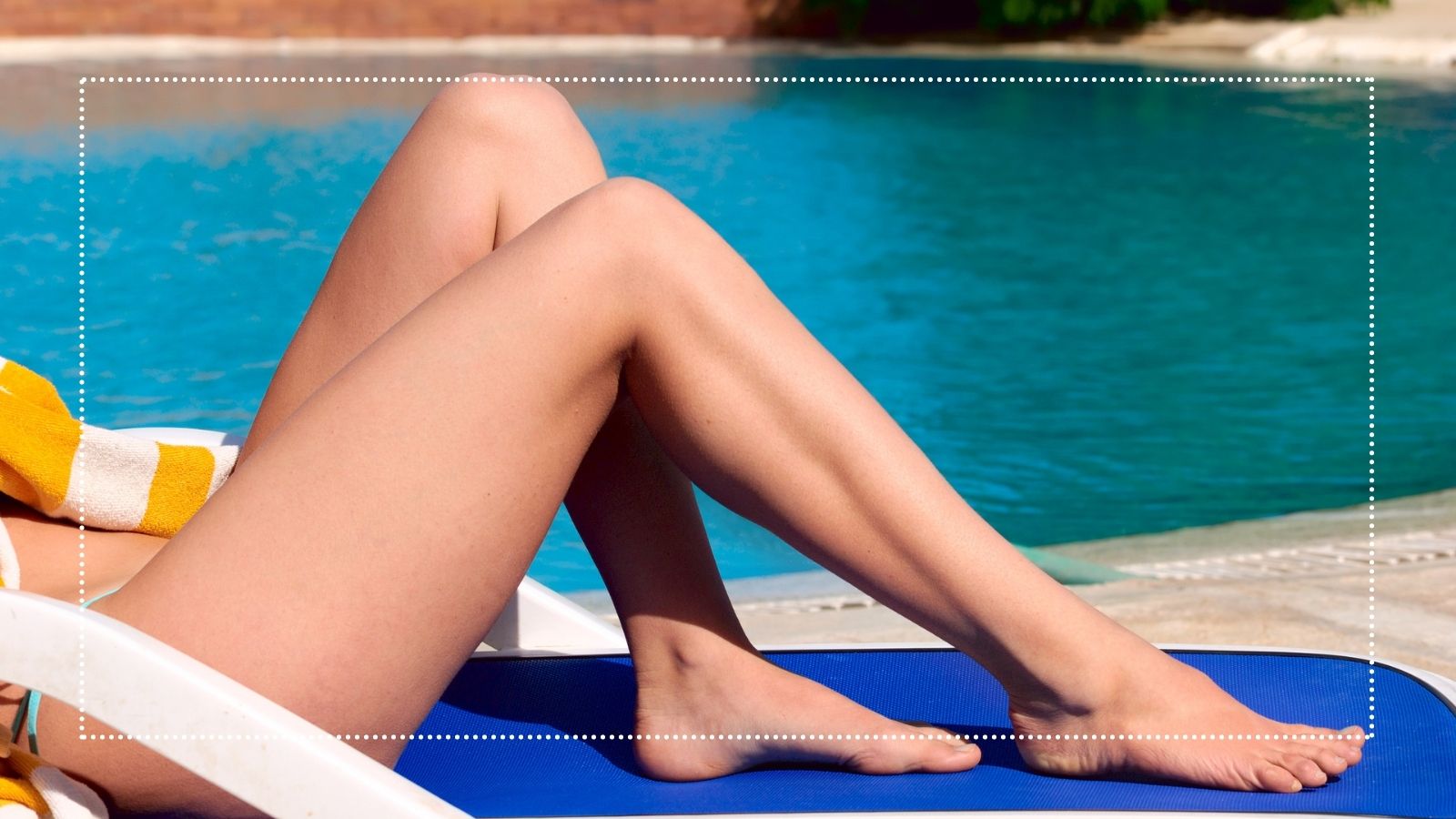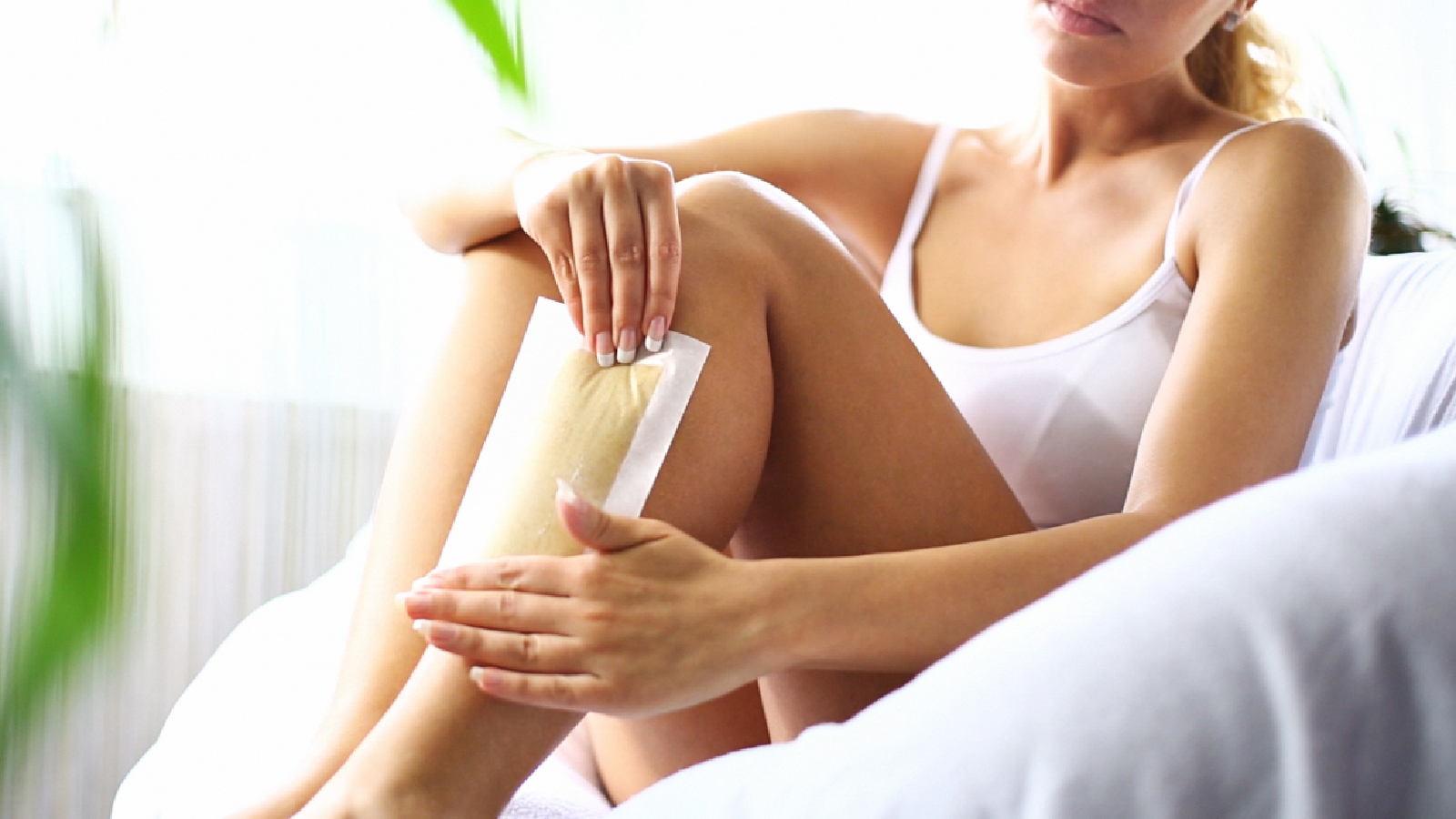How to wax your legs—the complete guide
Follow the experts' advice on how to wax your legs, and waxing could become your go-to method to achieve beautifully smooth skin


If you've ever considered at-home waxing, but been unsure how to wax your legs, now's the time to learn. Because, frankly, when it comes to hair removal, waxing is a great option: when done correctly, it’s fast, simple, and not as painful as you may think.
Going to a professional might be the best option for you; it lessens the work you have to do, and you can have peace of mind knowing you’re putting your trust in the right people. On the other hand, waxing your legs at home is a great way to save money, as long as you know what you’re doing—which is why we asked the professionals to share their insights about how to wax your legs while enjoying the benefits—that is, minimizing pain and maximizing smooth skin (if, after reading this, you maintain that for you shaving is a better option than waxing, be sure to look into the best razors for women).
Ultimately, whether you see a waxing specialist or you do it yourself at home, it’s important to implement waxing best practices to keep your skin smooth and healthy.
Before you learn how to wax your legs—the basics of waxing
Rather than dive head-first into the how-to, let’s talk about how you make the decision to try waxing and what you can do to be prepared. Many women love waxing because, as well as leaving their skin soft and smooth (it's like an at-home facial for your legs), the effects are long lasting. However, is there an appropriate hair length for waxing? Is there such a thing as hair that’s too long or too short?
The short answer is yes. Hair should be at least ¼ inch long in order for the waxing strips to take hold of the hair. It also should not be any longer than ½ inch long, lest the process leave undesirable results.
When hair is too long to wax, it can break either above or below the skin, instead of directly from the skin’s surface as desired. When this happens, it results in skin that is not entirely hairless, or the impacted areas can end up with ingrown hairs.
What waxing tools do you need?
Once you’ve established your hair is the appropriate length for waxing, it’s time to gather your tools.
Sign up to our free daily email for the latest royal and entertainment news, interesting opinion, expert advice on styling and beauty trends, and no-nonsense guides to the health and wellness questions you want answered.
There are many waxing kit options out there, containing everything you need, but if you are gathering the materials yourself, here’s what you’ll want on hand:
- High-quality wax: For an extra-gentle option, look into variants for sensitive skin
- Applicator: This is typically a flat wooden stick that looks like a tongue depressor
- Wax heater: If you don’t have one, a microwave will do
- Pre-depilatory lotion: This will protect your skin from the wax and achieve better results
- Post-wax cooling gel: Aloe vera or a cooling lotion will do, the same you might use if you were trying to treat sunburn
The benefits of waxing
Waxing has a bad reputation—you've seen the commercials for hair removal alternatives, picturing women shrieking with pain as they remove a wax strip. But it doesn’t have to be this way; when you know how to wax your legs properly, this method can be the one that keeps your skin most happy and healthy.
In fact, waxing is viewed by some dermatologists as one of the best options for hair removal out there. While laser hair removal can give long-term results, it's expensive, time-consuming, and can have side-effects.
“Hair removal using wax,” on the other hand, “is the most affordable, long-lasting, effective, and easy way to get rid of leg hair,” says Dr. Ahmad Fayyaz Chaudhry, a collaborating dermatologist at Scandinavian Biolabs. “Except for mild irritation and redness after the procedure, it has the least side effects.” This is why waxing is a popular option when it comes to facial hair removal too.
The main issue women face when waxing their legs is lack of know-how. If you don’t want to go to a professional, listen to expert advice on how to wax your legs.
How to wax your legs at home
Waxing your legs at home may sound daunting, and we won’t lie, it can be. But the more you know about the process itself, the more confident and comfortable you'll be when undertaking it yourself.
Take your lead from Dr. Chaudhry, who shared a step-by-step guide for how to wax your legs at home:
- Avoid taking skin-sensitive drugs like retinoids immediately before waxing.
- To help alleviate any pain, take an over-the-counter painkiller 30 minutes beforehand.
- Wash your legs with fresh, warm water before you begin.
- Heat the wax in the microwave, or with a wax warmer if you have one.
- Spread the wax on the desired area using a stick, ensuring that you apply it in the same direction that the hair is growing.
- Place a waxing strip over the wax and wait two minutes. Pull your skin taut and rip it off with a jerk motion in the same direction that the hair is growing.
- After you’re finished waxing, apply a cold compress to avoid soreness. This can also help prevent razor burn too.
Follow this procedure to the letter, and your legs will thank you.

Pre- and post-waxing tips from professionals
When it comes to knowing how to wax your legs, the period before and after a hair removal treatment is just as important as the process itself. These pre- and post-waxing tips from the professionals can reduce pain and increase effectiveness.
Before waxing
When you make a waxing appointment—or mark your calendar for at-home waxing day—you have homework to do to prepare.
“It is important to routinely moisturize and hydrate the skin and stop using acne and anti-aging products the week before a wax appointment,” says Dr. Erum N. Ilyas, a board-certified dermatologist at Schweiger Dermatology and founder of AmberNoon. “This reduces the chances of severe pain or irritation.” Use the best skincare for dry skin to properly prepare yourself.
Taking care of your skin regularly is essential, no matter what method you use for hair removal, but it is especially important if you take up waxing. Find the best skincare products and use them often.
After waxing
Part of knowing how to wax your legs is accepting that the work isn’t over once the waxing is done. You still have to take precautions to make sure your skin doesn’t start to hurt.
“Avoid working out for six to eight hours after your waxing session, and steer clear of steaming hot showers,” says Dr. Monica Michel, a medical aesthetics practitioner and founder of SOMA MD.
Anything that was harsh on your skin before hair removal—such as excessive sweat and scalding hot water—is sure to be worse after the fact. Waxing puts your skin through a lot, and it’s essential to take care of it when the process is over.
Waxing shouldn’t be scary. It’s a highly effective, fast, and simple hair removal solution. If you follow the advice of dermatologists and beauty experts, you can never go wrong.
woman&home thanks Dr. Ahmad Fayyaz Chaudhry of Scandinavian Biolabs, Dr. Erum N. Ilyas of AmberNoon and Schweiger Dermatology, and Dr. Monica Michel of SOMA MD for their time and expertise.
A lifelong creative writer and beautyphile, Eunice Lucero-Lee graduated from De La Salle University in 2002 and was hired a year later to front all beauty coverage for Pink Magazine. A beauty, astrology, and pop culture obsessive and insider for over 18 years, Eunice is an internationally published editor (and now certified astrologer) whose work has been featured in publications such as Cosmopolitan, Esquire, and The Numinous, among many others.
